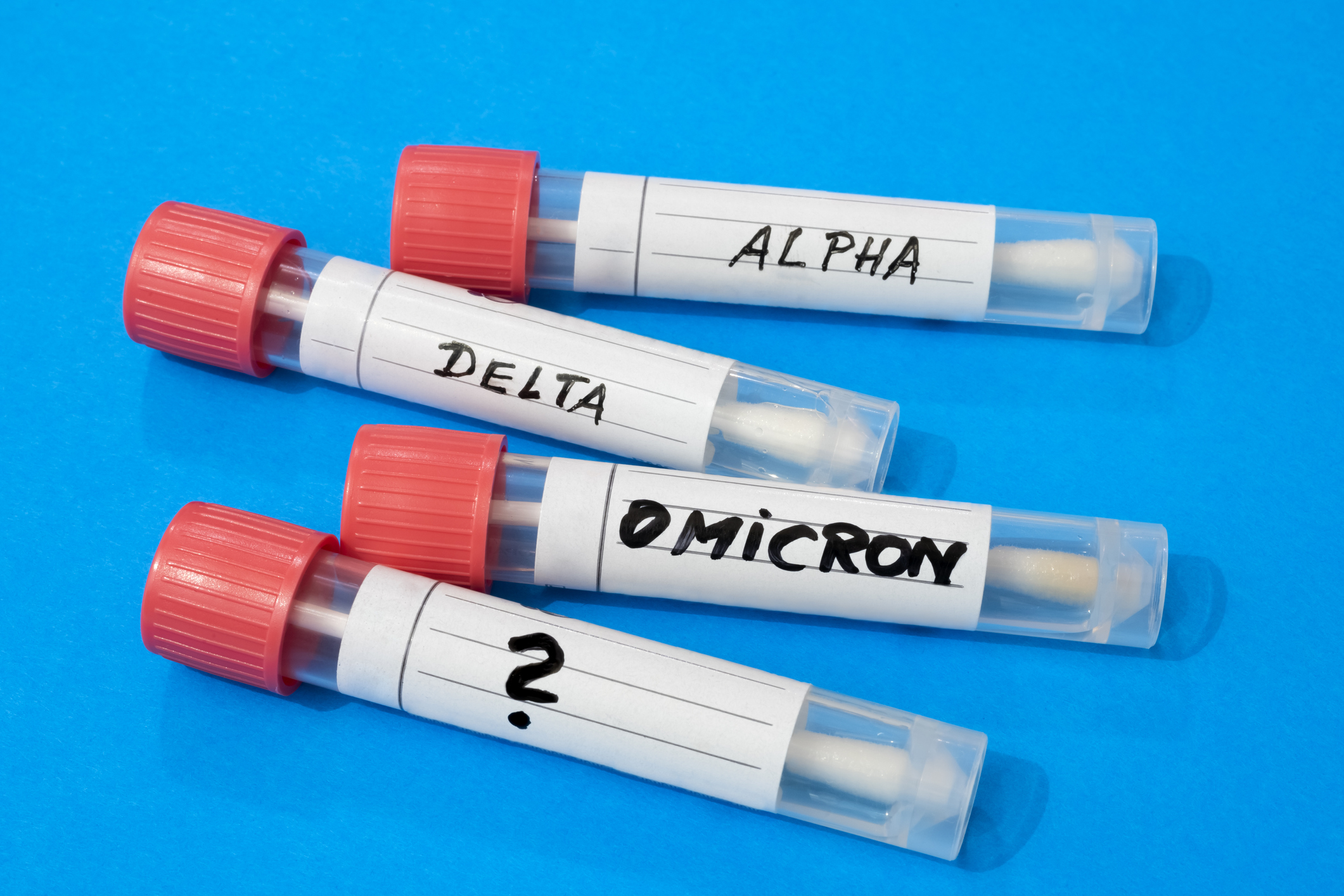
If you can name the currently circulating coronavirus variants without looking them up, your memory is better than most people’s—even those who are still paying attention to COVID-19.
At the moment, the top five variants in the U.S. are called BA.5 (making up about 39% of new cases, per the latest data from the U.S. Centers for Disease Control and Prevention), BQ.1.1 (almost 19%), BQ.1 (16.5%), BA.4.6 (9.5%), and BF.7 (9%). Meanwhile, the XBB variant has been detected in at least 35 countries, and the European Centre for Disease Prevention and Control is monitoring a variant called B.1.1.529.
This alphabet-soup nomenclature feels like a marked departure from the World Health Organization’s (WHO) Greek letter system, which was instituted in May 2021 to give people an easy and location-neutral way to refer to new variants. While the Greek lettering system, which yielded names like Alpha, Beta, and Delta, did not replace existing scientific naming systems—such as those responsible for labels like BA.5 and XBB—it was meant to simplify public communication about important viral strains.
The WHO only assigns a new Greek letter to a variant if it’s significantly different from previous versions. And for the last year, we’ve seen flavor after flavor of Omicron, rather than totally new iterations of the virus, explains Maria Van Kerkhove, the WHO’s technical lead for COVID-19. That’s why we haven’t yet had a strain called Pi.
Dr. Peter Hotez, co-director of the Center for Vaccine Development at Texas Children’s Hospital, has nicknamed the newer strains “Scrabble variants,” because many of them contain high-scoring Scrabble letters like Q and X. And, he adds, because they “kind of scrabble your brain.”
“I’m a scientist who’s been developing coronavirus vaccines for the last decade, and it’s even challenging for people like myself” to follow them, Hotez says. They’re not just hard to remember. The names are enough to make the average person’s eyes glaze over—which isn’t great, considering that much of the public has already checked out of the pandemic.
Van Kerkhove, however, argues that the public probably doesn’t need to know all the granular details of BQ.1 versus BQ.1.1 versus BF.7. “What the general public really needs to know is, what does it mean for me in terms of risk? We will give new names using the Greek letters when these variants are substantially different to each other” in terms of severity, immune evasion, or transmission, she says.
Read More: How to Stay Safe from COVID-19 During the 2022 Holiday Season
But some experts say variant names do have real-world implications for average people. Hotez points to the new bivalent boosters, which were formulated to target the BA.4 and BA.5 variants. BQ.1 and BQ.1.1 are descendants of BA.5, so the vaccines probably also provide some amount of protection against them, and that knowledge would perhaps provide extra motivation to get the new shots. But, in part because of their names, the average person likely doesn’t know that BQ.1 is related to BA.5, Hotez says.
T. Ryan Gregory, a professor of integrative biology at Canada’s University of Guelph, says the alphabet-soup names are important for scientists to know, because they communicate information about how the virus has evolved. But he thinks there should also be common names that the general public can use, just as there are scientific and common names for animal species. He’s even promoted (unofficial) nicknames for recent variants, calling BQ.1.1 “Cerberus,” BQ.1 “Typhon,” and XBB “Gryphon.”
If all the variants start to blend together in the public consciousness, people might not register the emergence of new strains that may be able to dodge immunity they’ve acquired from vaccinations or prior infections, Gregory says. A clearer understanding of circulating variants could also be important in health-care settings, since some monoclonal antibody therapies don’t work well against certain variants, he adds.
Van Kerkhove says the WHO’s Technical Advisory Group on SARS-CoV-2 Virus Evolution is working on a “more robust” method of assessing when a variant should get a new name, with a particular focus on immune evasion. The jump from Delta to Omicron was so dramatic that it was an easy call to give Omicron a new name, Van Kerkhove says. But now that the virus is mutating in subtler ways, it’s a more complicated decision. In late October, the advisory group voted against assigning new labels to XBB and BQ.1 because they are not sufficiently different from previous forms of Omicron.
For variants that don’t meet the WHO’s threshold for a new Greek letter, the agency could at least use a more understandable naming system, Hotez suggests—perhaps starting with Omicron, and then moving on to Omicron 1, Omicron 2, and so on. Van Kerkhove says the WHO has discussed doing so, but even that system comes with problems. There are about 300 Omicron sublineages currently under surveillance, she says, and “Omicron 300 sounds like a movie franchise.”
The public probably doesn’t need to know and discuss all of those variants, Gregory says. But for the strains that spread widely and account for a significant portion of infections, it’s worth having easily comprehensible names.
Right now, most people either feel like, “‘Wow, this is alphabet soup, and I can’t keep track,’ or ‘Well, it’s all Omicron,’” so it doesn’t matter when there’s a new variant, Gregory says. What the public is missing—and what it needs, he says—is a shared vocabulary that would help everyone understand the pandemic as it continues to evolve.
More Must-Reads From TIME
- The 100 Most Influential People of 2024
- Coco Gauff Is Playing for Herself Now
- Scenes From Pro-Palestinian Encampments Across U.S. Universities
- 6 Compliments That Land Every Time
- If You're Dating Right Now , You're Brave: Column
- The AI That Could Heal a Divided Internet
- Fallout Is a Brilliant Model for the Future of Video Game Adaptations
- Want Weekly Recs on What to Watch, Read, and More? Sign Up for Worth Your Time
Write to Jamie Ducharme at jamie.ducharme@time.com